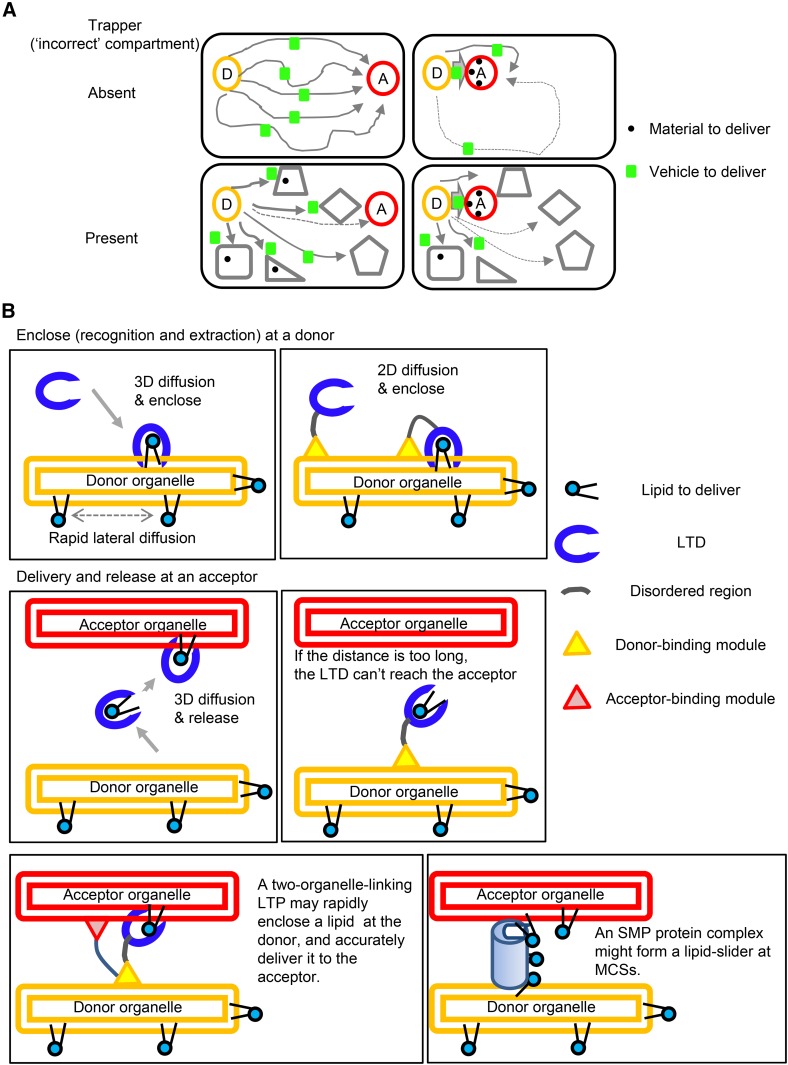Fig. 6.
Accurate delivery in the LTP-mediated inter-organelle transport of lipids at MCSs. A: Two systems with different numbers of compartments in the same space volume. A material-carrying vehicle is released from a specific compartment (D, donor) and diffuses in the space in a random-walking manner. The system has only one correct compartment (A, acceptor) to which the material is targeted to reach, while all non-donor compartments are capable of irreversibly trapping the material upon meeting. In a space with only two compartments, a material reaches the acceptor with 100% accuracy, independently of the distance of the two compartments (upper panels). In a space with many compartments (lower panels), accuracy depends on the relative distance among the donor, acceptor, and other compartments. See also the text. B: Mechanistic insight into the advantage of LTP-mediated inter-organelle transport of lipids at MCSs. In the step of enclosing a specific lipid synthesized in a donor organelle, an LTD prebound to the donor organelle may meet the lipid more efficiently than a cytosolically diffusing LTD (upper panels). However, if the donor organelle-bound LTD in complex with the lipid is incapable of reaching the acceptor organelle, the LTD cannot mediate the inter-organelle transport of the lipid (middle panels). This issue is overcome if the donor-bound LTD is capable of simultaneously associating with the acceptor organelle (lower left panel). For an SMP protein complex bridging two organelles, lipid molecules may slide through the complex, inserting their hydrophobic moiety in the interior of the protein and protruding their hydrophilic moiety into aqueous environments (lower right panel).

